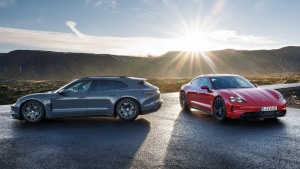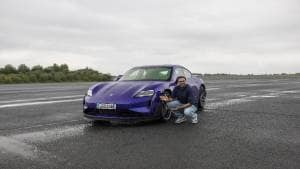2022 Porsche Taycan first drive review
I had only seen the Taycan in the pictures, much like so many other electric cars that hit the interwebs every day. But when Porsche makes one, you have got to take notice. Because you see, it is one of the few brands that doesn't need to market driving pleasure - it is simply synonymous with it. So when they do an electric, you are bound to be intrigued to find out if it still feels like a Porsche. We have had such questions in the past too - when they did a four-door coupe or built a tall-riding SUV, and while everything can't be a sportscar, they have managed to set themselves apart from the rest with other such body styles too. So does the Taycan do it too as the world shifts to batteries and motors?
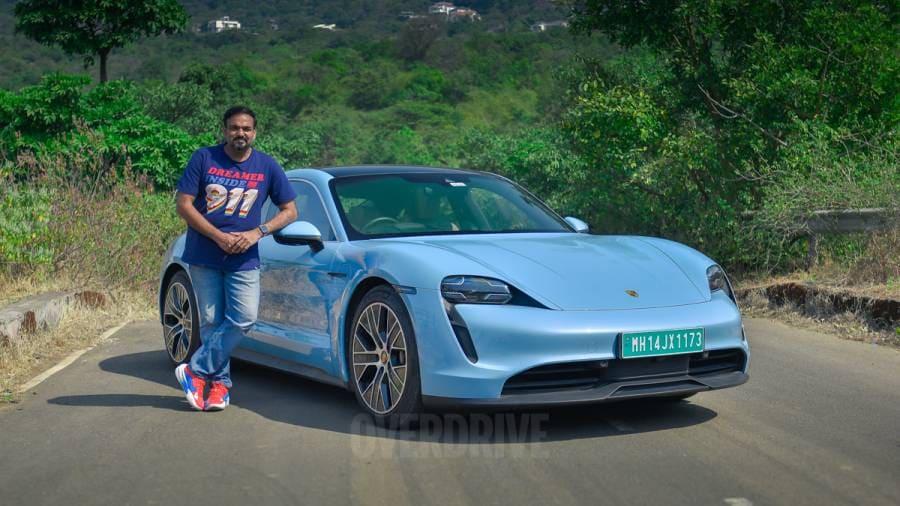
Design
With conventional radiator grilles becoming obsolete in EVs, car designers have often struggled to make the face on an electric look as handsome or convincing as the cars we have grown up with. But Porsche has never had to do big grilles on the front of their sports cars - so the classic shape and design of a 911 morph easily onto the Taycan as well. The Taycan has a clean wedge shape and the bodywork appears to melt over the wheels, creating some sensuous looking lines and haunches. Despite the four doors, the Taycan looks more like a stretched 911 than an electrified Panamera. That comes courtesy of a narrower glasshouse and a more exaggerated tail section which makes the tail look sharper, while the visual distribution is such that it prevents the Taycan from looking as cab-rearward as the Panamera.
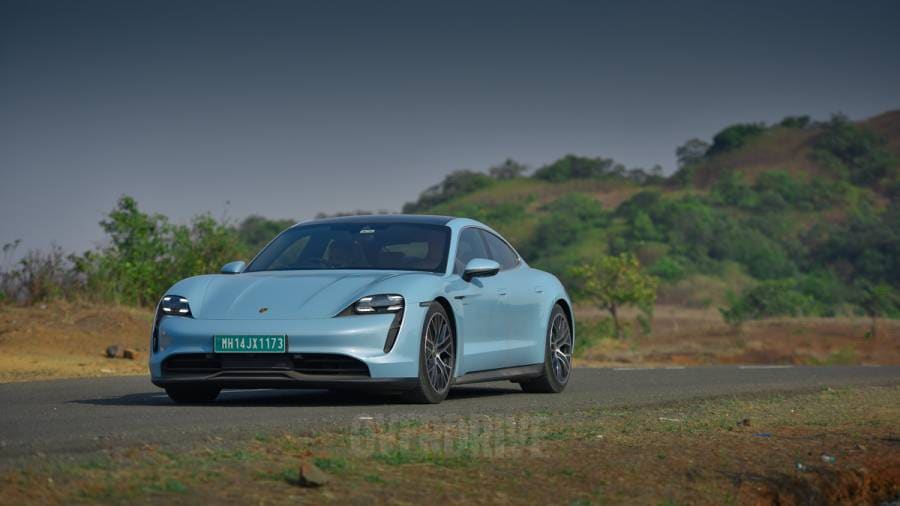

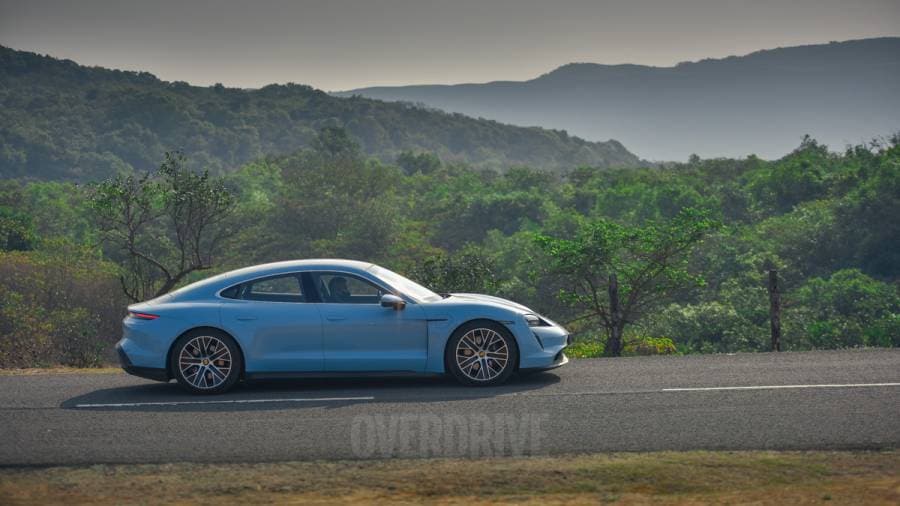
There are some unique touches too, like the air curtains integrated along with the headlights, the presence of charging sockets above both the front wheel arches and a tail that is devoid of tailpipes (of course). But there is no mistaking this Porsche for any other brand of car. All the fins, cuts, surfaces and flat underbody and wheel designs make the Taycan one of the most aerodynamic Porsche production cars of all time.
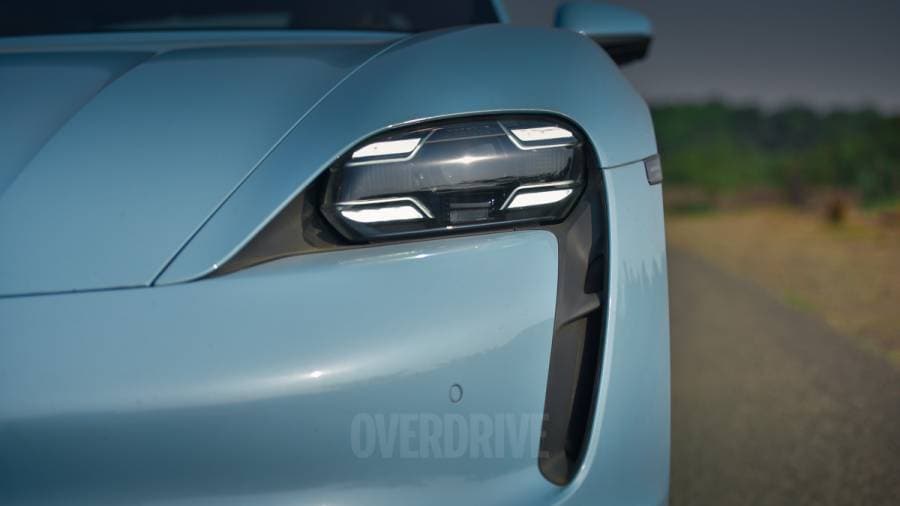 The air curtains next to the headlights add a unique touch without making the Taycan look outlandish
The air curtains next to the headlights add a unique touch without making the Taycan look outlandish
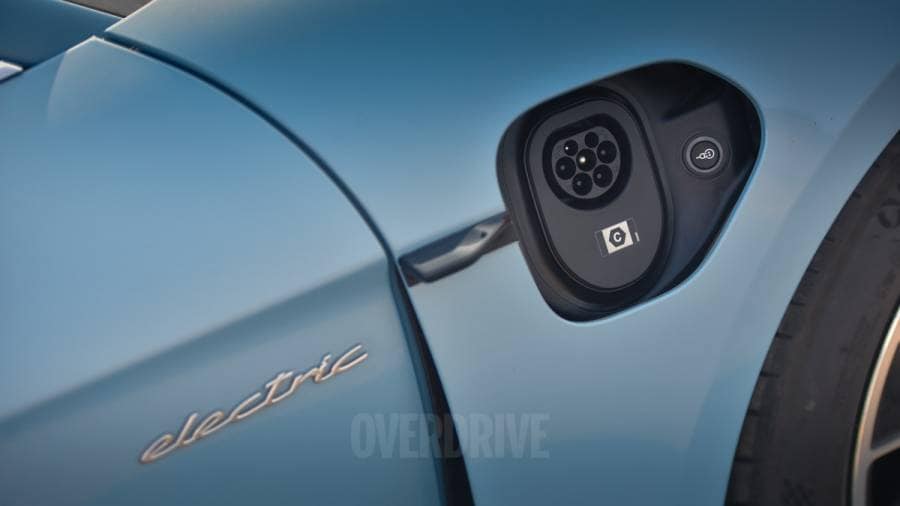 The doors for the charging port open in a cool way, watch our video review to see what we are talking about!
The doors for the charging port open in a cool way, watch our video review to see what we are talking about!
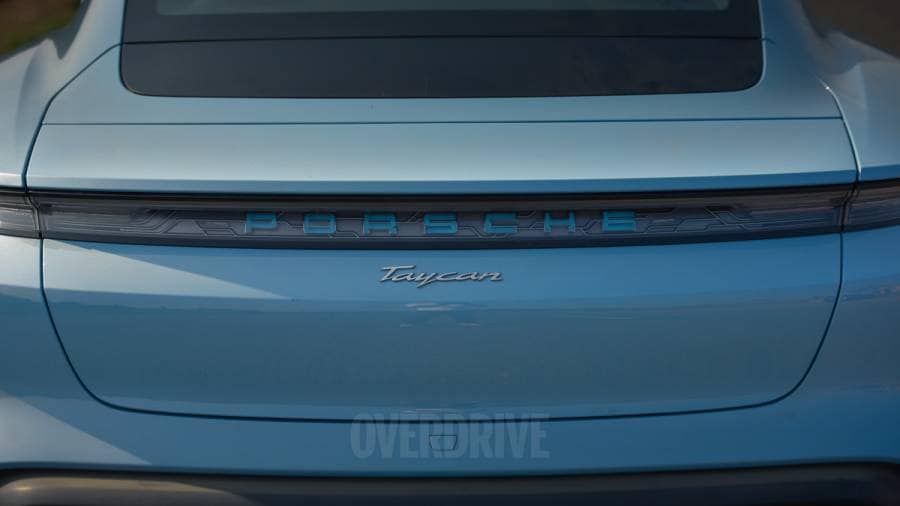 The blue Porsche lettering in the glass window along with detailing that mimics a printed circuit board, highlights the electric motivation of the Taycan without being too shouty about it
The blue Porsche lettering in the glass window along with detailing that mimics a printed circuit board, highlights the electric motivation of the Taycan without being too shouty about it
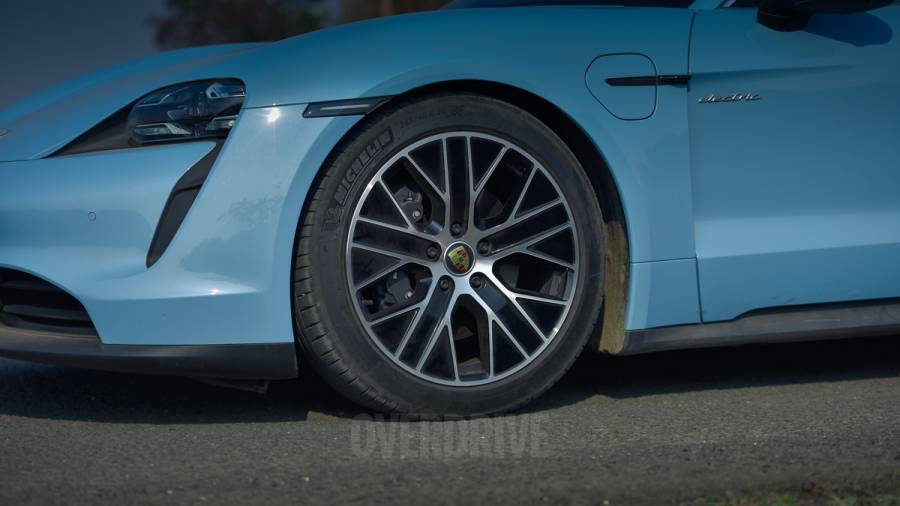 The tyres sit on a fatter sidewall and contribute to the astonishing ride comfort
The tyres sit on a fatter sidewall and contribute to the astonishing ride comfort
Cabin
While the Taycan's exterior echoes the styling cues from Porsche's past, the cabin takes a glimpse into the future. If you are worried that you spend too much time looking at screens, the Taycan is going to add to it! Multi-function screens that run across the length of the dashboard aren't restricted to concept cars anymore. The Taycan has four screens at the front that pretty much replace all common controls and then some! Apart from the digital instrumentation and infotainment, the Taycan also gets a screen for the co-passenger to fiddle around on and get information about the media and navigation. Seems superfluous and that is why it is optional.
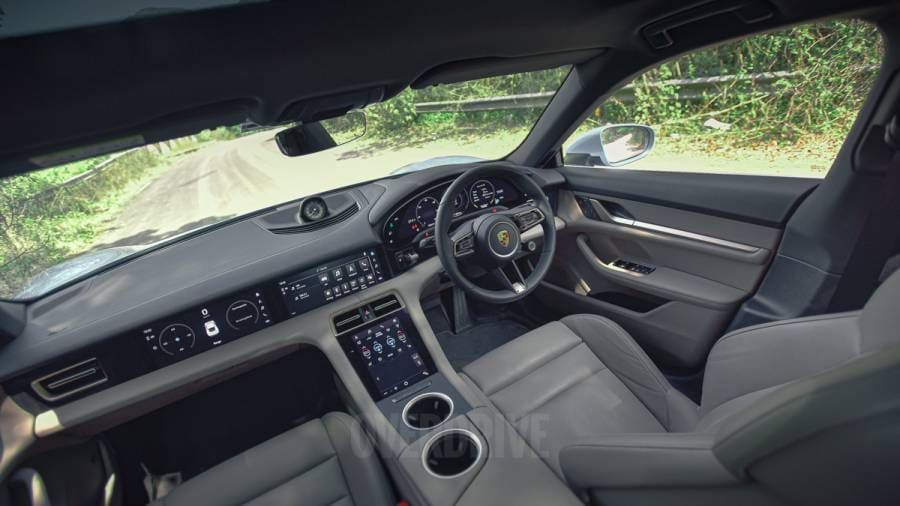
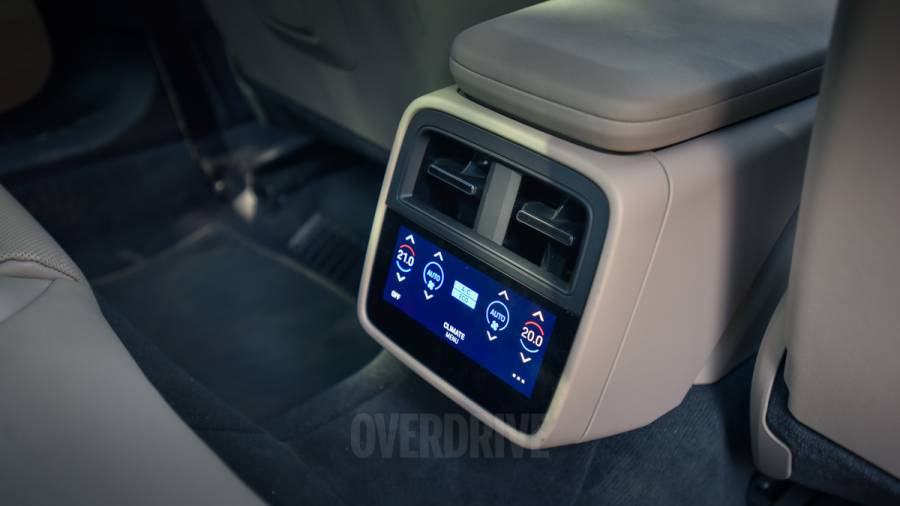
As you would expect, the screen on the centre console controls the HVAC. But interestingly, it also controls the mechanical movement of the air-conditioning vents. It is a bit odd considering you need to take your eyes off the road to make adjustments to the flow. It is not only unsafe and tough but even the UI for it is unintuitive.
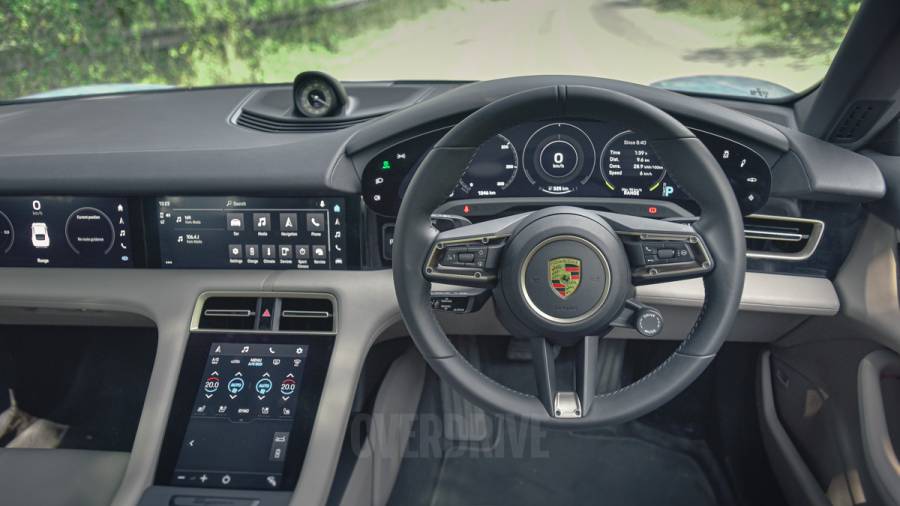
The driving position is driver-focussed as would expect and all the controls that matter are in the right places. Despite the expensive hardware that goes into a performance EVs like this, the Taycan doesn't use low-rent materials anywhere. Save for the screen on the centre console which feels a bit low-resolution, the fit and finish in the rest of the cabin feels expensive. Even the instrumentation is a touchscreen (only along the edges)! It lets you select driving modes or make adjustments to the lighting.
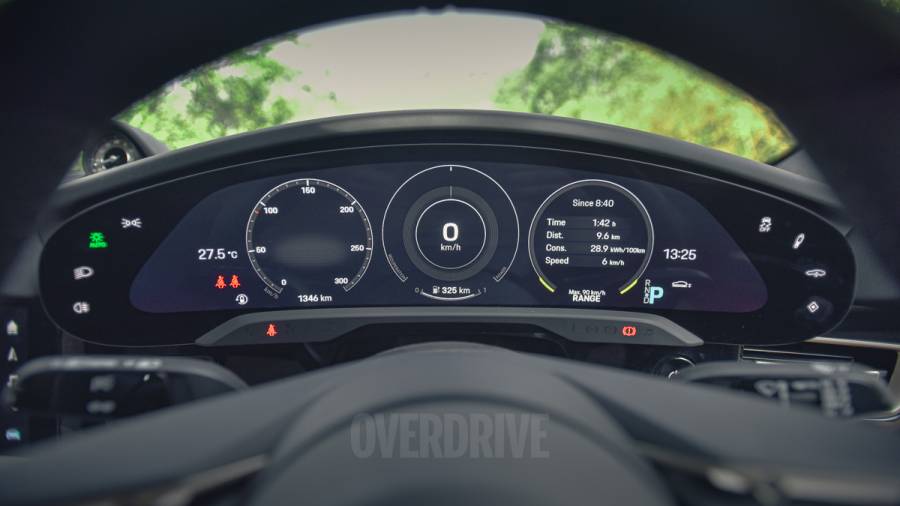
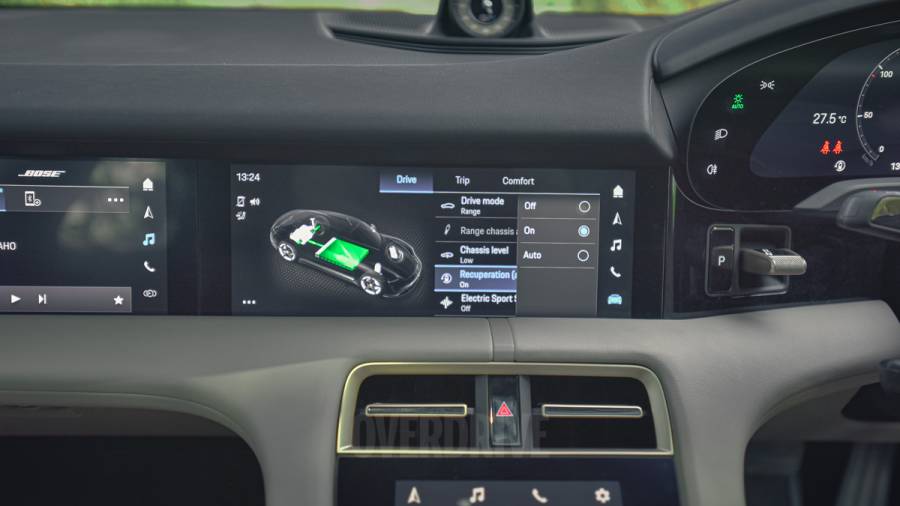

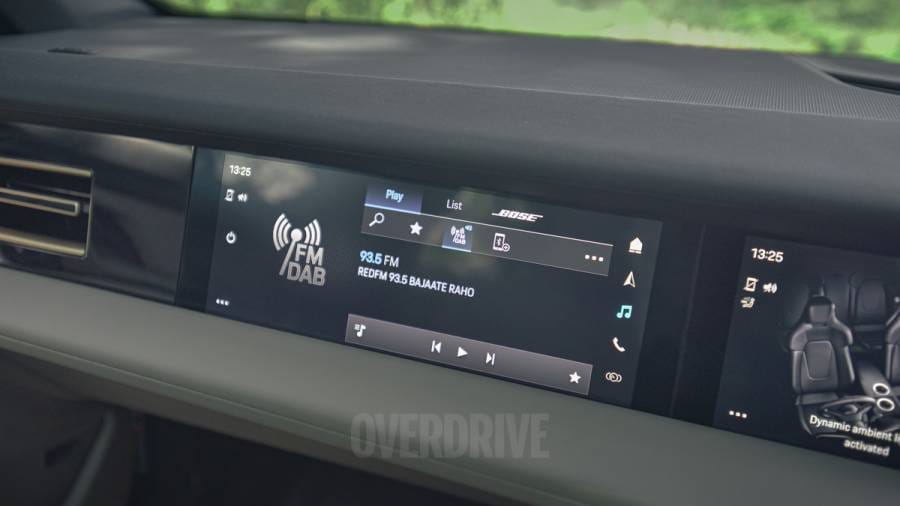
While the screens make the cabin look all digital and space-age, a riveted design on the steering spokes or the rotary knob for the mode selector and the signature analogue clock on the dashboard seems like an ode to the mechanical age. But you have got to miss the analogue tachometer that sits at the centre of the instrumentation on all IC-engined Porsches. I'm sure Porsche had long meetings during the development process contemplating what could replace the rev-counter, but I'm not sure what would suffice. An analogue speedo maybe?
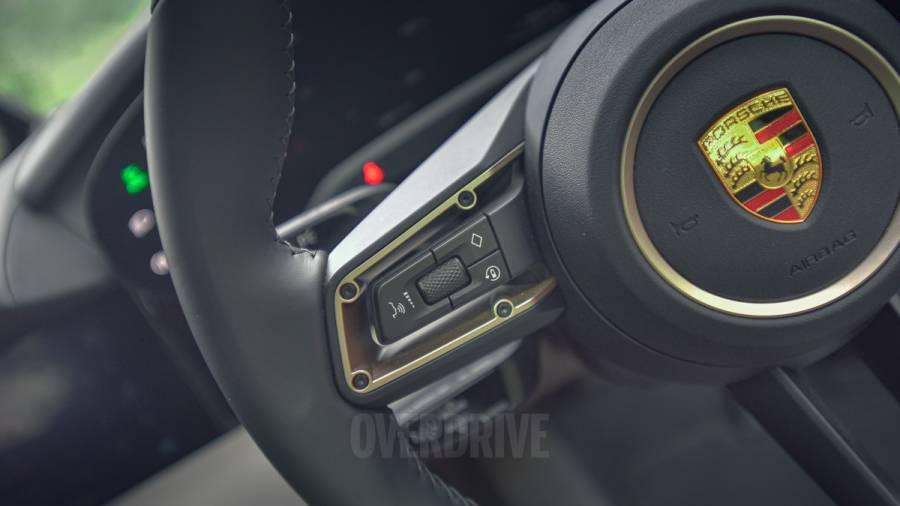
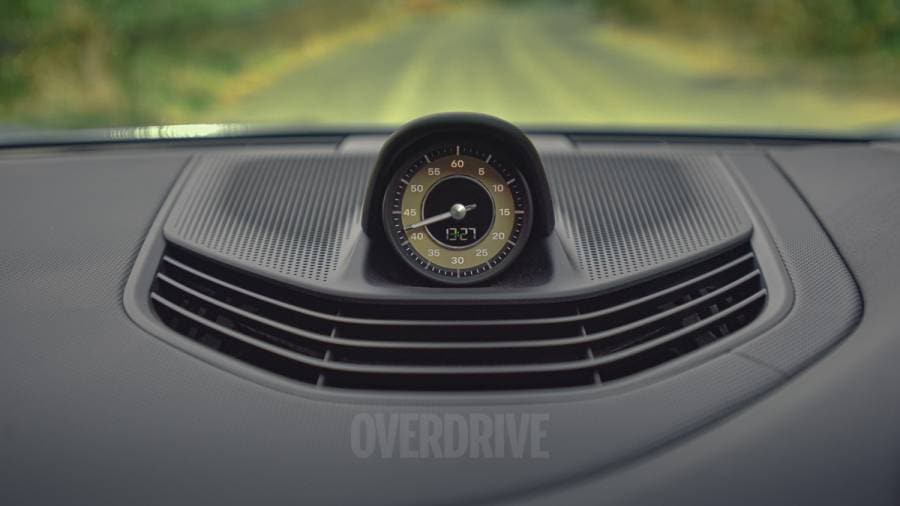
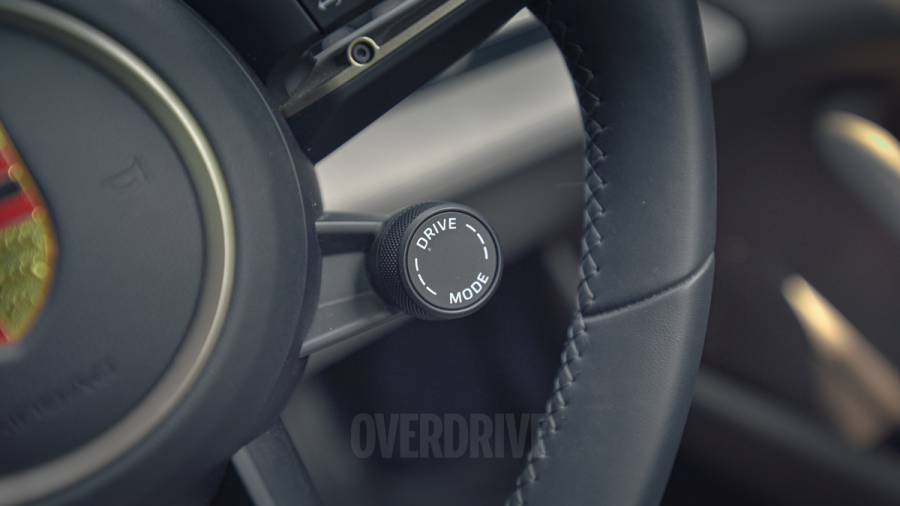
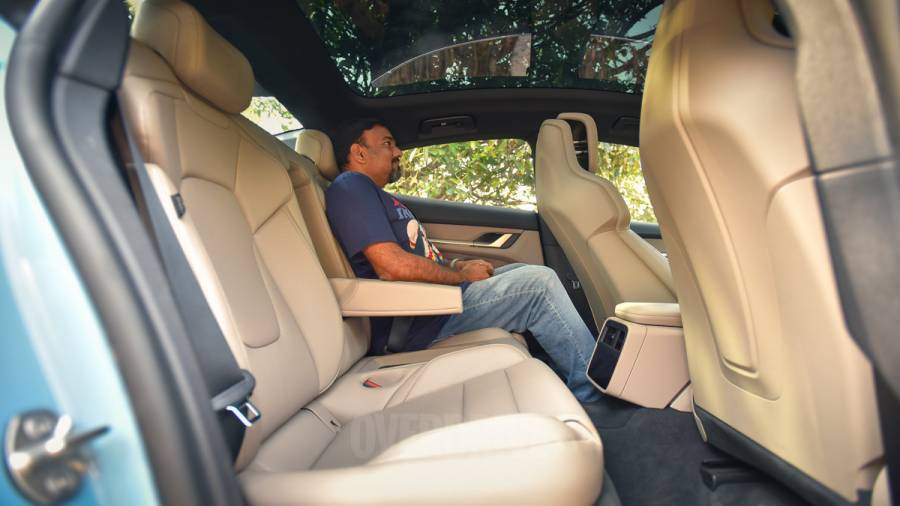
Does it drive like a Porsche?
Rev-counters also help drivers plan their gear shifts, which makes them obsolete on EVs. But on the topic of shifting, the Taycan gets a two-speed transmission. That helps the Taycan manage a brisk acceleration as well as relaxed highway cruising. The Taycan with its single-decker 79.3kWh battery claims a range of 300kms when driven in the Range mode and will ferry four adults in comfort. The rear seats are contoured almost as nicely as the front but set pretty low like most four-door sports coupés. The polarised glass roof fills the cabin with plenty of sunlight (and warmth on sunny days) making the cabin feel pleasantly roomy in all four seats, while the dashboard, tunnel console and footwell cocoon around the driver like a sports car should.
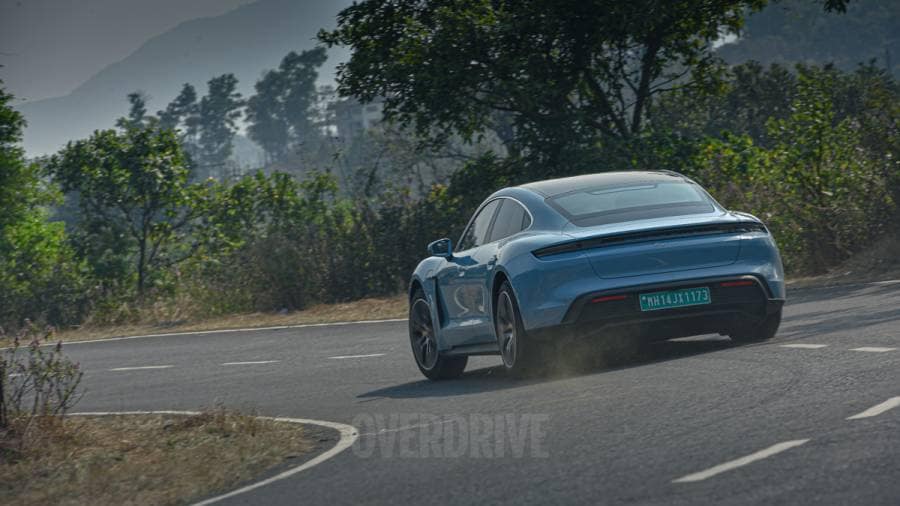
The Taycan you see here is the base model and is arguably the one to buy if you are looking for a battery-powered Porsche. Unlike its Turbo or 4S derivatives, the base-spec Taycan uses a single electric motor that only powers the rear wheels and with the batteries sitting in the floor as a load-bearing component of the chassis, think of this to be something like a mid-engined, rear-wheel-drive setup. Just that this is a two-tonne car like a performance SUV for example.
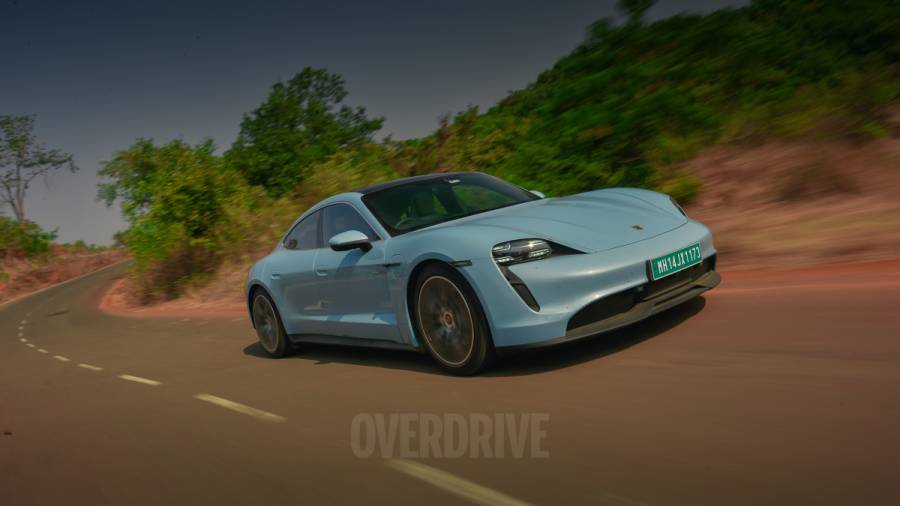
And yet it has the magical handling package that we love on the Porsches. You would have to read the spec sheet to believe that it is so heavy. It feels quick around the bends no doubt but has an agility that's comparable to a Panamera GTS and that is a big feat to achieve. In typical Porsche fashion, if you turn off the electronic aids, you would really have to push this car hard around the bends to break traction and make it twitch and slide - that is how good the dynamics are, inherently. And while the brochure makes the rear-wheel-drive setup sound more basic compared to the twin-motor Taycan 4S, the RWD is certainly a lot of fun and allows you to be more aggressive with the front axel and turn in sharply.
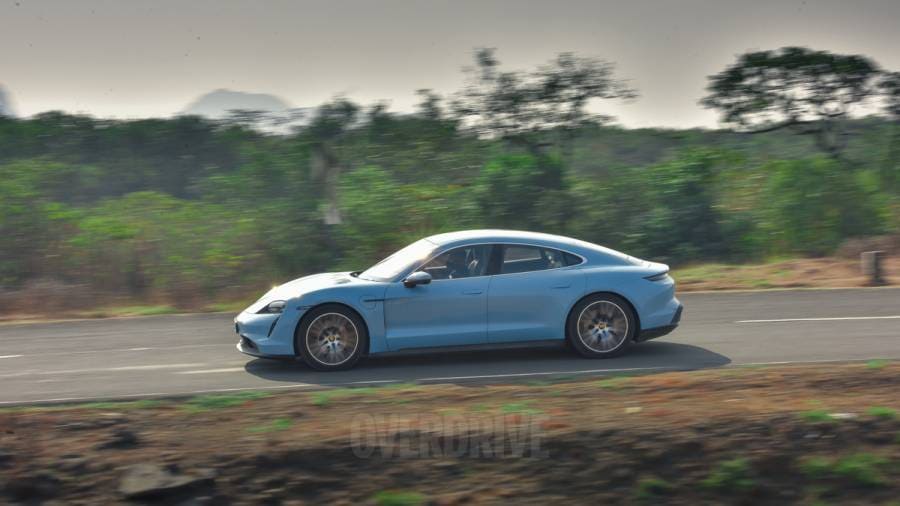
Like most sportscars you would have to be careful over bumps and through potholes, but like most Porsches, the ride is supple, which is astonishing given the weight it carries in its belly. The Taycan also rides on tyres with thicker sidewalls than the low-pros on equivalent 911s and Panameras, and that adds a gutter layer of cushioning to the ride.
As you start to make more use of the fine-tuned steering, you realise how tight the chassis is. You can tweak it to your liking by adjusting the stiffness of the three-chamber air suspension and even lowering the car for better cornering performance or lifting it to negotiate tall speedhumps.
The brakes could do with a bit more feel though when driving normally. Instead of going with the typical single-pedal driving touted by most EVs, Porsche has nicely married regenerative as well as physical braking into the brake pedal itself. That way you can have the motor help you cut speeds while cruising and only summon the discs and pads when you press the pedal hard or turn off regenerative braking and only resort to the physical brakes when you want more connect and feel from driving pedals.
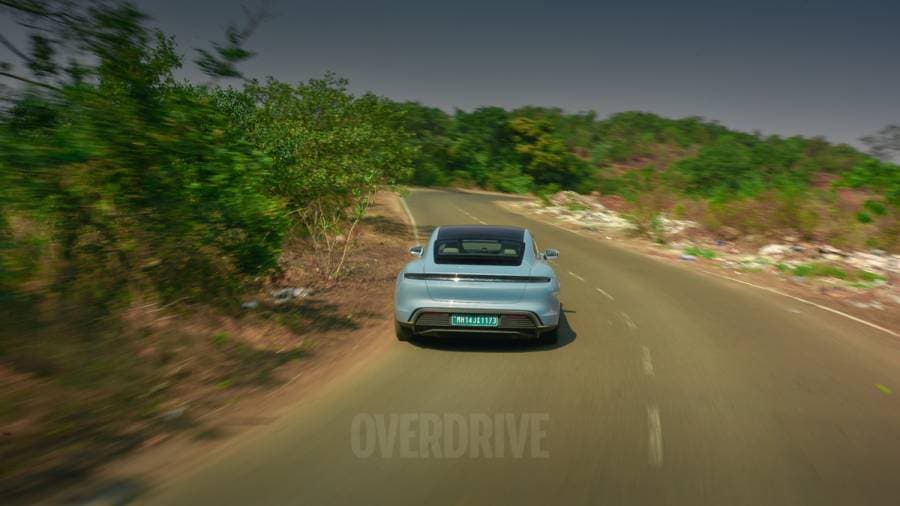
Speaking of feel, the Taycan's 326PS permanent magnet synchronous motor has a linear power delivery, but the on-tap performance means that the car feels brisk overall. The feel of the throttle pedal is quite natural and progressive too. Porsche lets you choose a larger double-decked battery pack (93.4kWh), which enhances range but the acceleration or the top speed remain unchanged because of the additional 77kg weight it brings along. With the Launch Control function, the motors get a power boost and the base Taycan manages the 0-100kmph sprint in 5.4s, which isn't as quick as say a 718 Cayman, which does it in under 5s. 200kmph comes up in under 18s while top speed is restricted to 230kmph.
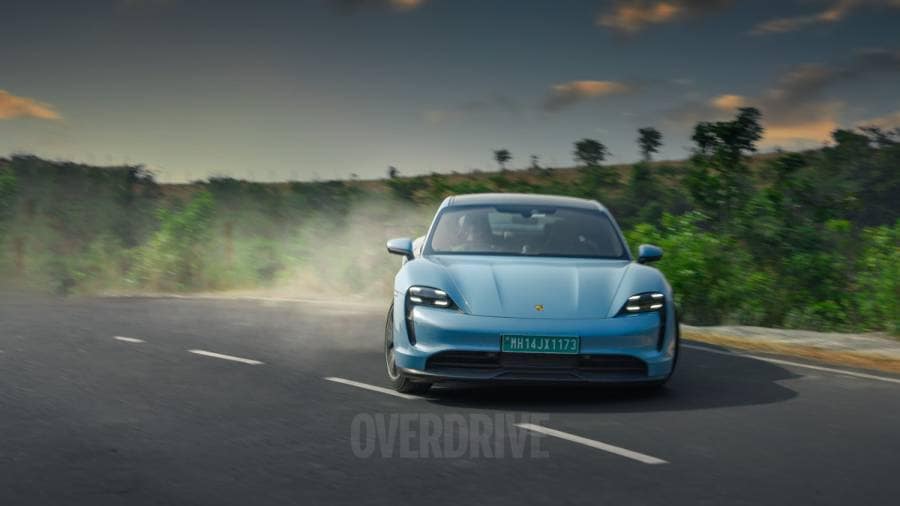
Honestly, a 5.4s sprint is quick. It is quick enough to blur the surroundings in your peripheral vision but doesn't feel rapid enough when your peripheral vision is also seeing a Porsche logo on the steering wheel. You won't leave a mark of your head on the seats like you would in a 911. Add to it the fact that nothing is tickling your hearing senes - so the difference between the Taycan and a 911 Carrera is like having to pick between two choice of partners, where only one of them knows how to arouse all your senses - and it clearly is the 911 that does it for me. But that comes from all the choices that we have made until now. Looking at the future, it is cars like the Taycan that will pick up the mantle of keeping us driving enthusiasts happy and while Porsche agrees that it won't be the same, they have proven that it will still be worthwhile. This then is the future of the sportscar and it's certainly not boring.
Photography Anis Shaikh
-NA-
-NA-
Automatic
761
1050
-NA-
Starts Rs 86 Lakhs
1988cc
Automatic
300
380
-NA-
Starts Rs 1.38 Crore
3436cc
Automatic
350
390
12.19 Kmpl
Starts Rs 1.45 Crore
3996cc
Automatic
689
620
-NA-
